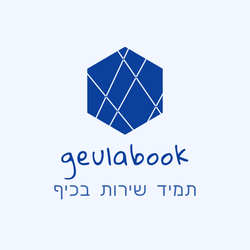First of all, if we are talking about Talmud in general and the Babylonian Talmud (Bavli) in particular we must touch on a concept called oral Torah or Torah she beh-al Peh (תורה שבעל פה). The interpretations and explanations given by sages to the Torah in particular, and the Bible in general, as well as the laws and laws established by sages to meet the changing needs of life, are called "oral Torah." Put them in writing for fear that the oral Torah will be forgotten. According to the traditional tradition of the Oral Torah, as of the written Torah, it is at Mount Sinai.
The Oral Torah - Torah she beh-al Peh (תורה שבעל פה) mainly includes the following files:
A. The Mishnah - is a collection of laws and disputes that were handed down orally, until the Mishnah was edited by Rabbi Yehuda Hanasi in about 220 AD.
B. The Talmud (Babylonian and Jerusalemite) are books that include the discussions that took place, up to the fifth-sixth century in the Beit Midrash following the Mishnah. The Babylonian Talmud was and still is used as the main textbook in yeshivas and beit midrash.
C. Midrashim of Halacha and Aggadah are commentaries on the Bible (not on the path of the simple), whether to study the laws of the Torah or to produce ideas and guidance in the ways of life.
After the signing of the Mishnah by Rabbi Yehuda Hanasi, the period of the Tannaim ended and the period of the Amoraim began. The main activity of the Amoraim was to interpret the teachings of the Tannaim: Mishnah and Beret. The Mishnah was considered a certified halakhic book and was disputed. The Amoraim interpreted the Mishnahs, excused contradictions between conditional sources, drew new principles and laws from the Mishnahs, amended regulations, established customs, established rules of jurisprudence, and even dealt with the realms of legend. The summary of the Amoraim is concentrated in the Talmud: the Jerusalemite Yerushalmi - ירושלמי and the Bavli - בבלי.
In the Land of Israel, the Amoraim operated in various centers during the various periods, including Tzipori, Tiberias, and Caesarea. In Babylon, the centers were the yeshivas of Sura, Nahardea, and Poombadita. The doctrine of the Land of Israel came to Babylon and vice versa, by the sages who traveled from the Land of Israel to Babylon and from Babylon to the Land of Israel, and were called "Nahutai" - descending.
The fate of the two centers was different: in the Land of Israel the kingdom of condemnation increased (Roman and Byzantium), and it oppressed the Jews and abolished the presidency a few generations after the signing of the Mishnah. In contrast, the center of Babylon remained outside the borders of Rome and Byzantium, the centers of Christianity. Babylon was ruled by the Persians from the House of Sassan, a regime that was convenient to the Jews, and enabled the prosperity of the yeshivas in Sura, Nahardea (until its destruction), Poombadita, and elsewhere. The difference between the status of the settlement in Eretz Israel and the settlement in Babylon is also reflected in the difference between the Jerusalem Talmud and the Babylonian: the Babylonian Talmud was carefully edited under good conditions, while the Jerusalemite was conducted briefly and in poor order.
The geniuses of Babylon spread the Babylonian Talmud throughout the Diaspora of Israel, and it became the book of Halacha that obliges all of Israel.
Of course there is a fact that if you go into the depths you must purchase in our store a variety of books and sets of Mishnah Talmud Gemara and also books of Halacha and tradition. To buy Talmud Bavli>>>

